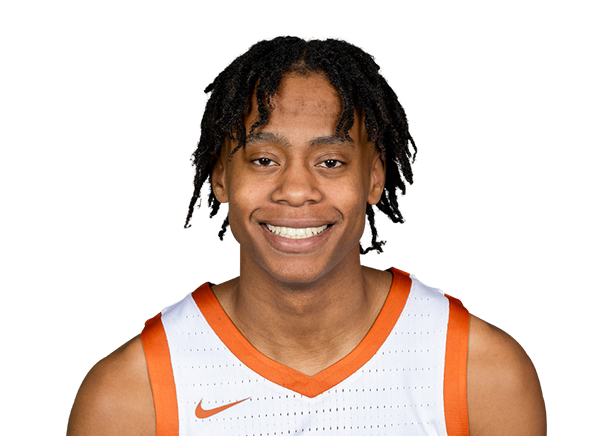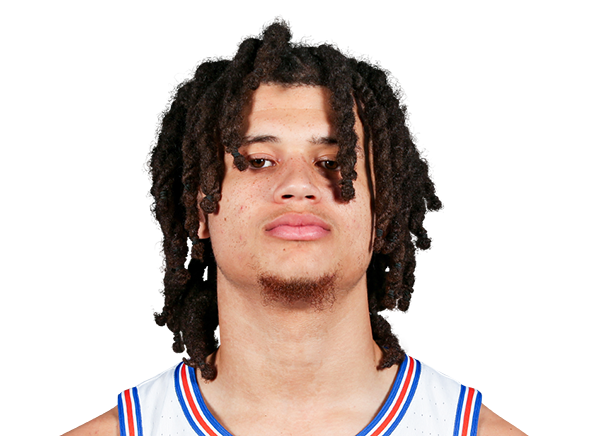Full Analysis
Offense
Asa Newell’s offense hinges on three core traits: elite athleticism, off-ball instincts, and vertical finishing. With a 72.8% FG at the rim and 44 dunks in 23 games, he’s one of the most explosive and twitchy finishers in the class. Much of this production comes from cutting, transition, and offensive rebounding (14.2 OREB%), where he flies in with a quick second jump and elite timing. He constantly makes himself available as a dump-off or lob target, giving him real value as a two-way play finisher in NBA schemes.
His face-up and straight-line driving flashes add intrigue, where he’s shown some potential to attack closeouts with fluid footwork and stride length, even if his handle remains loose. Georgia has featured him more than any prior stop, and he’s adapted well to a higher-usage (23.6%) role without breaking character: low turnovers (1.1 per game), high efficiency (61.2 TS%), and minimal forced plays.
However, Newell remains extremely limited as a creator and decision-maker. He offers very little in the short roll, shows minimal passing feel (22 assists vs. 24 turnovers), and tends to stall when met with defensive resistance during pick-and-roll sequences. His roll gravity is still theoretical, as he often pops instead of rolling and shoots just 35% as a roll man. While he has soft touch on hook shots (48.6 FG%), he lacks variety and finesse in the paint when not dunking.
Shooting is the swing skill. Newell is eager but not yet consistent: 25.9% from 3 (2.3 3PA/G), largely from pick-and-pops and spot-ups, with a funky, quick-trigger release that can lack balance and arc. Free-throw indicators are promising (75%), and the mechanics are coachable, but he’s not yet a credible spacer. If he becomes one, his offensive ceiling rises dramatically. Otherwise, he’s an off-ball finisher with limited self-creation and shaky floor spacing.
Defense
Newell’s defensive projection is far more optimistic. He offers a rare combination of mobility, instincts, and motor, making him one of the most versatile big defenders in this class. His steal (2.4%) and block (4.3%) rates are both elite, particularly impressive given he often guards away from the rim.
He’s light on his feet, fluid flipping his hips, and strong laterally for a 6'9" big. He can guard up or down the lineup, switching onto wings and even holding his own against guards. He’s not a dominant rim protector in terms of volume (1.1 BPG), but he rotates well, contests shots vertically, and doesn’t chase blocks at the expense of positioning. In space, he closes out under control and recovers well when beaten; his ground coverage and repeat efforts are high-level.
That said, he’s not immune to lapses. There are bouts of ball-watching, late rotations, and being caught in no-man’s land, particularly when functioning as the low man. His defensive rebounding (13.5 DREB%) is also a weak point, as he can be dislodged by stronger bigs and still relies more on tools than fundamentals. His discipline is improving, but he’ll need to add strength and tighten awareness to anchor a defense.
Overall, Newell’s switchability, weakside shot-blocking, and closeout speed make him a rare power forward who can still protect the rim; a highly coveted archetype in modern NBA playoff lineups.
Looking Ahead
Asa Newell fits squarely in the modern energy big mold, offering defense-first value with elite tools and a high motor. He doesn’t need the ball to impact the game and plays with clear intent, maturity, and hustle. That alone gives him a high floor as a bench big or complementary starter.
The ceiling swings on skill development, particularly his jump shot, short-roll decision-making, and overall offensive diversity. If he can roll hard, knock down corner threes, and become a more consistent pick-and-roll threat, Newell could grow into a versatile playoff starter. If not, he’s still a useful third big who brings energy, rebounding, and defensive versatility.
The biggest challenge is positional clarity. He’s stuck between the 4 and 5: not quite big enough to anchor a defense full-time, but not skilled enough to space the floor as a stretch four yet. Still, these "tweener" concerns are diminishing in value as teams increasingly prioritize mobility, size, and two-way role players. If he becomes even an average shooter, his fit becomes nearly plug-and-play.



